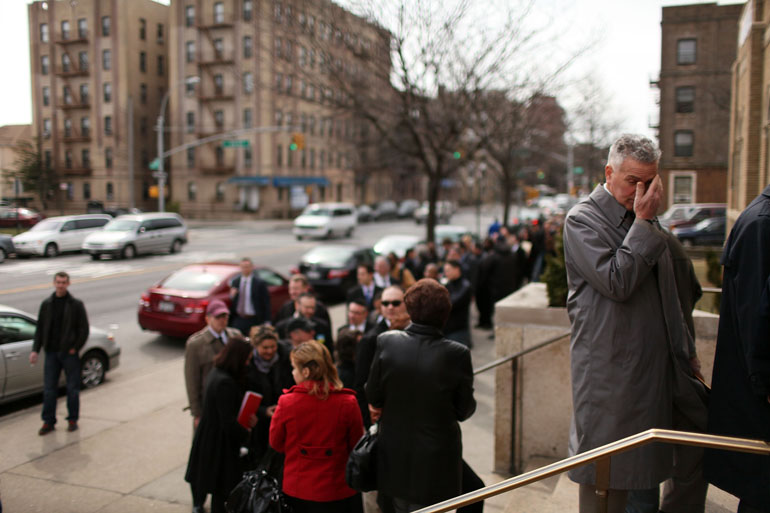Howard Kornblum has been watching every penny for the past 15 months and it’s about to get worse. After being laid off from his job as a consulting director in Michigan, he took advantage in March 2009 of a federal subsidy to help pay for health insurance.
With the government picking up 65 percent of the tab, Kornblum’s share of the premiums was $236 a month. But starting on June 1, the subsidy expired for the first people who got it, and Kornblum’s benefits end tomorrow.
Under the federal COBRA law, a laid-off worker can stay on his employer’s plan a total of 18 months, but the employee must pay the entire cost of the coverage. The COBRA subsidy initially part of the 2009 stimulus package provided the funding for 15 months for people who lost their jobs.
A U.S. Treasury study found that up to a third of eligible unemployed workers took advantage of the benefit. The average cost of a family plan is more than $13,000 annually not affordable on an unemployment check. The Obama administration estimates that about 500,000 workers who lost their jobs each month were eligible for the COBRA subsidy, said Sandra Salstrom, a Treasury spokeswoman.
Although he is losing his subsidy, Kornblum, 54, still has the option to continue COBRA health insurance for three months. With shoulder surgery looming, he’ll now be paying the nearly $700-a-month premium to continue the coverage.
“I have to, I don’t have a choice right now,” Kornblum said. After that, he hopes to have found a job, he said, but if he doesn’t, he’ll buy health insurance on the individual market, even though the cost is higher.
Some might consider Kornblum one of the lucky ones. Starting this month, the newly unemployed aren’t eligible to get the subsidy at all. The proposal to extend subsidies to those laid off through the end of the year is languishing in Congress, a casualty of worries about the deficit in an election year.
Congress extended the subsidies four times since February 2009, but the latest effort stalled before the Memorial Day recess. Congress may again consider extending the subsidy when members return next week, but it’s unclear how long such a proposal would take to make its way through Congress and what support there would be for it.
So the unemployed may soon pay more to remain on COBRA without a subsidy, look for insurance on the individual market, go on Medicaid if they qualify or lose coverage altogether. And that could further tax a health care system that’s already struggling to keep up with the number of uninsured. Some who have expiring COBRA coverage or did not get the benefit could be eligible to join existing state high-risk pools or soon-to-be-launched federal high risk pools. But the federal pools require participants to have preexisting conditions and to have been uninsured for six months.
Karyn Schwartz, a senior policy analyst with the Kaiser Family Foundation, said some people who continue their COBRA coverage may have another option: a state “HIPAA-eligible” plan. (KHN is a program of the foundation.)
Each state offers one for people with the pre-existing conditions whose coverage on COBRA has expired, but the premiums are often very expensive, and in order to qualify people must meet exacting criteria: They must have had COBRA for 18 months, have been covered the entire time, have a pre-existing condition that would preclude them from getting other coverage and must be able to pay the higher premium such a plan would charge. In the end, many may not be able to meet such a high threshold.
Additionally, 40 states offer so-called “mini”-COBRA laws to supplement federal COBRA that can provide additional benefits for as long as 36 months. The cost, however, is often higher than other coverage, such as an individual policy.
The bulk of people losing insurance may simply decide to drop their coverage altogether, joining the ranks of the uninsured, Schwartz says.
“It can be hard to keep their health insurance. Often the quality of what people can get on the individual market may not be as great,” she said, adding that individual plans are often more expensive and don’t cover things their employers’ plans used to cover. Additionally, people may make a conscious decision to pay other bills like rent instead of paying for health insurance. “They may decide it’s better.”
But Carrie McLean, a consumer specialist with ehealthinsurance, said that people should price the plans on the individual market to see if one is affordable for them. Consumers should also see if they are eligible for premium help under their state’s Health Insurance Premium Payment programs, which cover people under the Medicaid program if such coverage is deemed “cost-effective,” or if mixing and matching coverage for different family members could help them save money.
For example children may be eligible for coverage under the Children’s Health Insurance Program while other family members have individual plans. “Going with no insurance at all, you’re putting yourself at so much risk,” McLean said.
Katie Kemple, who was laid off last year from her job as public relations professional, said she will buy individual coverage for her family after her COBRA subsidy ends in August. Right now, she’s paying $450 a month for coverage for herself, her husband and her 2-year-old with the subsidy, which is similar to what she says she’ll pay for a high-deductible plan on the individual market after August. But the coverage is not as good as the COBRA subsidized plan she has right now and the deductible is $5,000, she says. “That’s before anything kicks in.”
Nonetheless, for Kemple, the choice is easy: “I would have gotten rid of anything else other than health insurance,” she said. “Other things come and go.”
Earlier, related KHN story:
Democrats Scale Back Medicare ‘Doc Fix,’ COBRA Subsidy Extension In Jobs Bill
(Villegas, 5/27).
